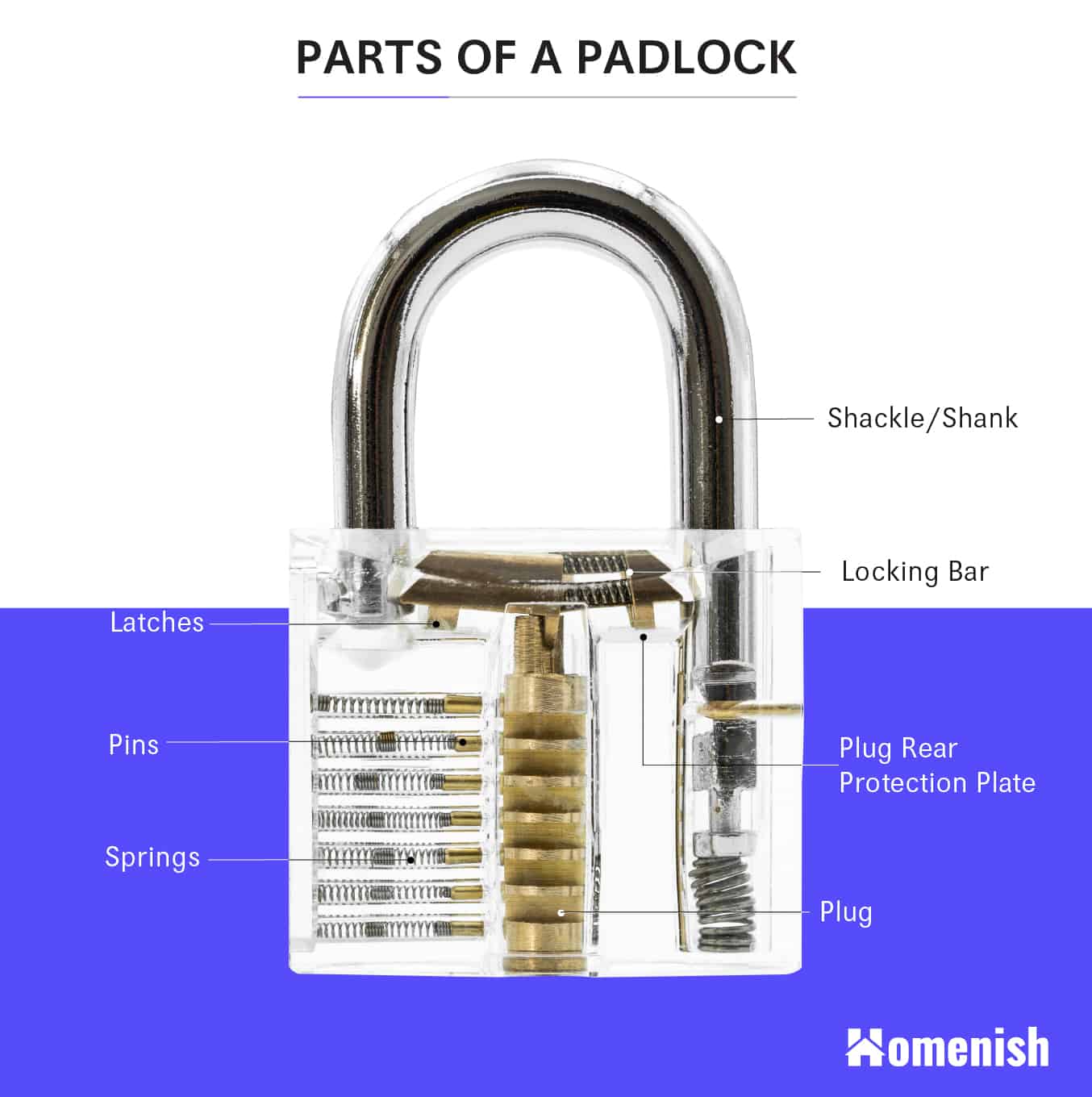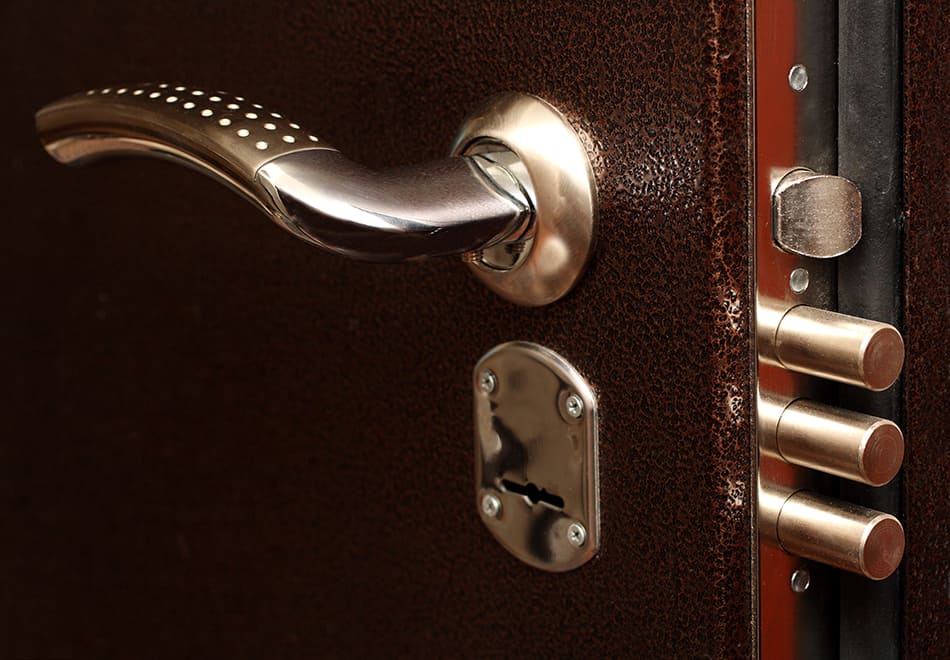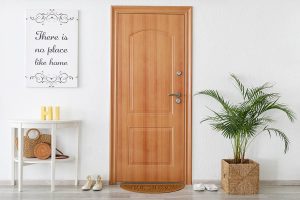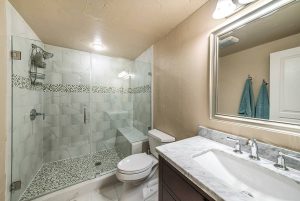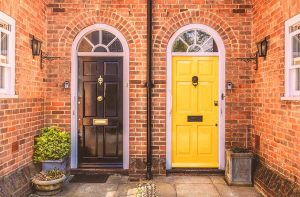There are so many different types of locks when it comes to securing a door. It can be confusing to know which lock you should choose for your home or office. One element which is crucial in helping you to understand the different types of door locks is to know the names and functions of each part of a door lock.
Familiarizing yourself with the terminology used in locksmithing will make it much easier to differentiate different types of locks so you can make a more informed decision on the security of your property.
Traditional locks, also known as mechanical locks, are the most common types of door locks used on the external doors of residential and commercial properties for security. These are the types of locks that probably come to mind when you think of a door lock, and they are operated with a key and a knob or handle.
Electronic locks are becoming more popular as this technology becomes more affordable and accessible to the masses, but these still make up a small minority of door locks.
In this guide, we will cover all of the main parts of a door lock, including internal and external elements. We also include 2 great custom diagrams about cylinder lock and padlock.
Parts of Door Locks
Parts of a Cylinder Lock
This great diagram showcases the anatomy of a cylinder lock.
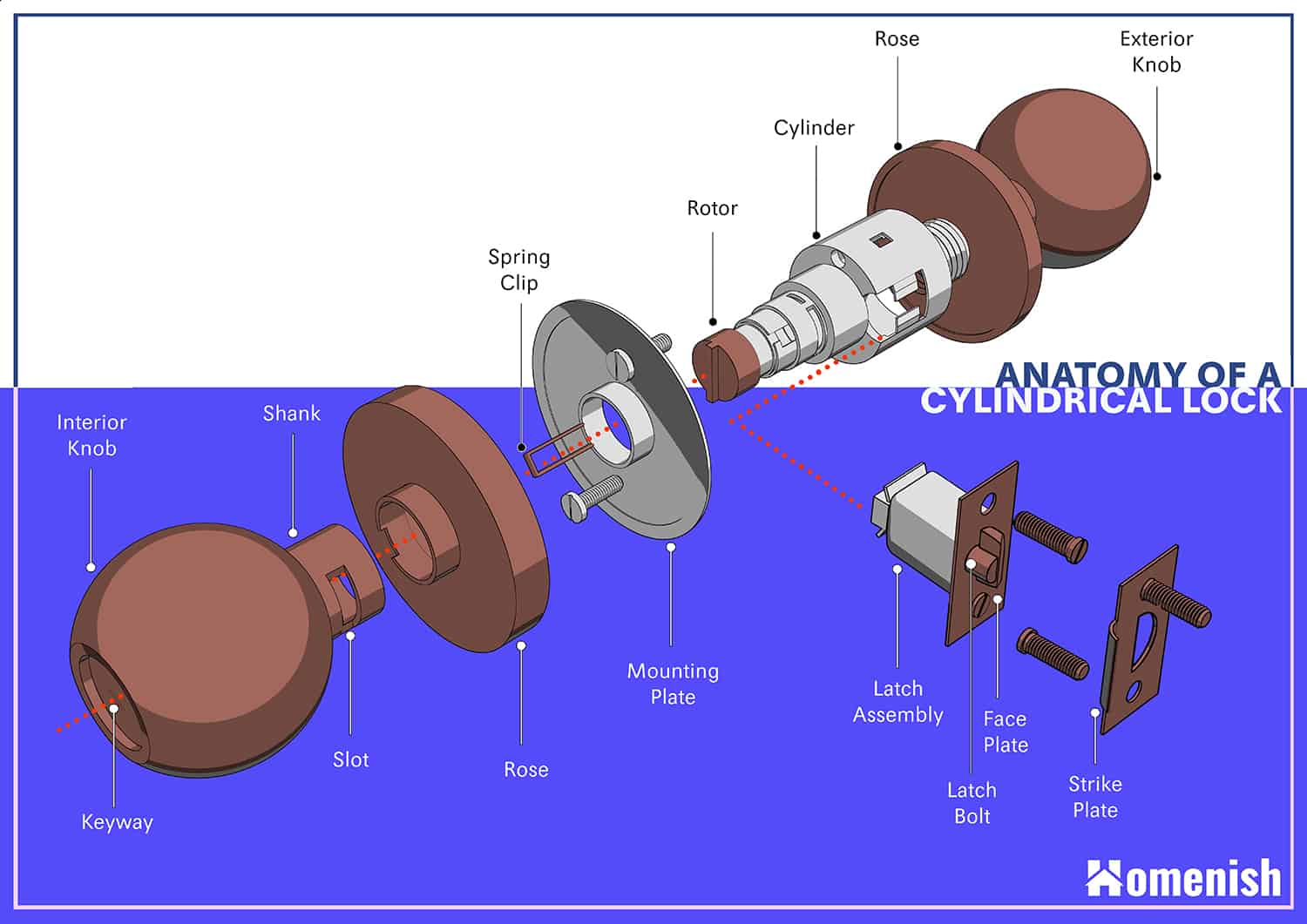
Cylinder
The cylinder of a lock is the part that contains the locking mechanism. It is the main body of the lock and is therefore sometimes referred to as the ‘lock body. Cylinders are spring-loaded with a series of pins that will not turn unless they are pushed in the right direction and pattern by the correct key. When you insert a key into a keyhole, it will be going inside the cylinder, and the ridges on the key will come into contact with the spring-loaded pins.
When the pins have all moved into their correct alignment, the cylinder will open and allow the bolt to move, resulting in the door being able to open. Cylinder locks are the most common types of exterior door locks, as they are considered to be very secure.
Bolts
Bolts protrude from the door and engage with the doorframe when the cylinder is in a locked position and recede when the cylinder is unlocked. This is what prevents or allows a door to be opened. There are various types of bolts used for door locks. The most common types of bolts include:
Spring bolt
A spring bolt is also known as a latch bolt. It works with the use of a spring clip that holds the bolt in place. The spring is compressed when being unlocked, thereby drawing the bolt into the body of the lock and allowing the door to open. When the spring is released, the bolt will revert to its natural position of being locked. This means that when the door shuts, the spring bolt will automatically lock itself without requiring a key.
This is a good time saver when you’re in a rush to leave the house and also provides peace of mind if you’re the type of person who worries that they forgot to lock the door on their way out. However, this type of lock also has its drawbacks, as it can be easy to lock yourself out of the house with the key still inside the property.
This might happen if you pop out to collect your mail or put the garbage outside, and a few seconds later, you find that the breeze has slammed your door shut and the spring bolt has locked you out. People with these types of locks often keep spare keys in a lockbox outside their property to ensure they can access their home in the event of this situation.
Deadbolt
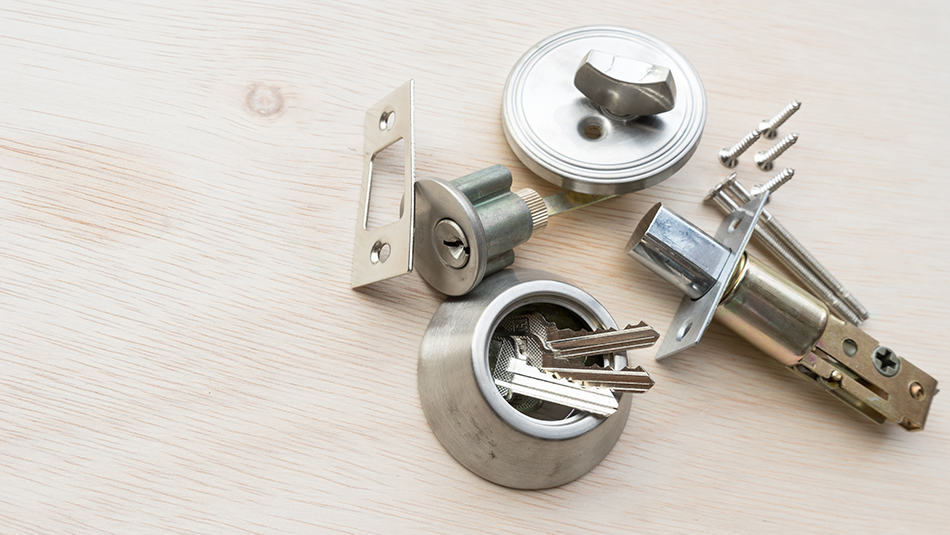
A deadbolt, or dead bolt, does not use a spring system and can only be locked or unlocked with the use of the key from either side of the door. Deadbolts tend to be considered more secure than spring bolts because the bolt cannot be forced back inside the lock without the correct key, which makes them more reliable against intruders.
Barrel Bolt
A barrel bolt has one long metal cylinder in a horizontal position which can be guided by a thumb push to lock or unlock the door. The bolt will engage with a matching metal cavity on the door frame when locked and be drawn back into the faceplate when unlocked.
These types of bolts are common on internal doors such as bathrooms but are not ideal for external doors as they can easily break if someone tries to kick the door down. However, some people add barrel bolts to their external doors as an additional means of security on top of a deadbolt or spring bolt.
Hinge Bolt
These bolts are fitted on the side of the door where the hinges are as an additional means of security. They help to prevent doors from being forced off their hinges in the event of an intrusion. This type of lock can be used on any wooden door and consists of a hardened steel bolt that protrudes from the door frame and locks into a hole in the door when it is in the closed position.
Hook Bolt
These locks are common on sliding doors. They use a spring bolt on a pivot with a hook-shaped head.
Strike Plate
This is a metal plate that is fixed to the door frame at the same level as the lock. It contains an opening hole into which the bolt will become engaged when the door is locked. A strike plate sometimes has a lip to help guide the bolt in the right direction.
Keyway
The keyway is the slot where you would insert your key, pushing it through to the cylinder of the lock.
Rotor
The rotor sits inside the cylinder of the lock and is turned when the correct key is inserted to release the bolt.
Cotter Pin
The cotter pin is what enables the rotor to turn when the correct key is inserted into the lock. It is a piece of metal that is put under pressure from a spring and will align with the grooves in a key to form a correct pattern for the release of the bolt.
Spring
This is a coiled piece of flexible metal that adds tension to the cotter pin, preventing it from being able to move the rotor unless a specific set of pins are moved to match the correct alignment.
Stator
This is an additional part of a cylinder lock that interacts with the rotor, enabling it to turn when the correct grooves are aligned with a key.
Trim
The trim is the metal plate that protrudes from a door and contains the keyway. It is usually fitted underneath the doorknob or handle. This is not a feature of all types of locks, but it is common on cylinder locks.
The trim is also known as the ‘rose’, or might be given a particular name in certain shapes, for example, a circular type of trim on a door lock will be called a ‘ring’. There are many types of trim available to match the style of the property.
Face Plate
This is a metal plate which is fixed to the external vertical edge of a door. It has a hole in it through which the bolt is able to pass and lock into the corresponding strike plate on the doorframe.
Spindle
The spindle is a part of the lock which connects the door handle or knob on either side of the door. It is a square-shaped rod that releases a latch inside the door to allow it to open when the doorknob is turned, or the handle is pushed down.
Handle or Knob
A lock is often accompanied by a handle or knob. The exterior parts will be called an exterior knob/handle; meanwhile, the inside parts are an interior knob/handle. These can be fitted separately to the lock or be included as part of the lock frame. A knob will be turned to the left or right by twisting it to open the door, whereas a handle will be pushed downwards.
A handle offers a better grip compared to a knob, so these are the best option in instances where a person with limited hand strength will be operating the door.
Parts of a Padlock
A padlock can be added to a door lock but is usually not used alone on residential properties. It is commonly used to lock sheds, garages, gates, or commercial buildings. A padlock is a removable device with a slot that is inserted through a loop and secured into place.
It can be locked with a key or with a combination lock. Padlocks are not considered very secure because if somebody wants to remove a padlock, they could do so relatively easily with a bolt cutter.
You can discover the major parts of a padlock via this diagram.
